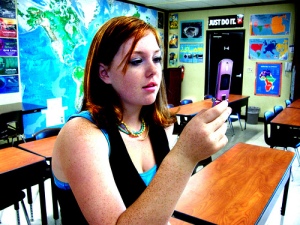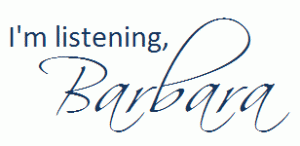
A colleague and I were having a discussion today about cell phone use in class, especially during student presentations. We were of the same mindset that it’s especially rude to be texting while a peer is doing a presentation for a grade. It’s tough enough to be standing up in front of a room full of peers; it’s doubly or triply tough to do it when your peers are (apparently) more interested in a tiny electronic device in their hands than whoever is baring his/her heart and soul by doing a presentation. A great majority of student speakers I have worked with would prefer eye contact and other forms of engagement to the appearance of boredom by the audience. Wouldn’t you?
NOTE: I do have a different view of tweeting in class, if the students are distilling the presentation and sharing soundbites in 140-character segments so that others can also benefit from the presentation. At times, I even encourage tweeting in class.
This reminded me of a blog post I wrote on my Becoming Learner Centered blog a while back. Below is a cross-post of what I wrote in 2008. The sentiment remains the same here in 2010.
Like many educators, I have a short statement in my syllabi stating that I do not want my students to be spending time in class text messaging or surfing the web. But many of my students probably believe this is just because I want them focused on me instead of elsewhere. And that’s partially true.
Why don’t I want them doing other things in class? Read this syllabus excerpt by Professor Cara A. Finnegan. (Cara gave me permission to reproduce her article from her First Efforts blog.)
Technology and the Problem of Divided Attention
In recent years the saturation of cell phones, text messaging, and laptops, combined with the broad availability of wireless in classrooms, has produced something I call the problem of divided attention. A March 25, 2007, article in the New York Times summarized recent studies of productivity in business settings. Researchers found that after responding to email or text messages, it took people more than 15 minutes to re- focus on the “serious mental tasks” they had been performing before the interruption. Other research has shown that when people attempt to perform two tasks at once (e.g., following what’s happening in class while checking text messages), the brain literally cannot do it. The brain has got to give up on one of the tasks in order to effectively accomplish the other. Hidden behind all the hype about multi-tasking, then, is this sad truth: it makes you slower and dumber. For this reason alone you should seek to avoid the problem of divided attention when you are in class. But there’s another reason, too: technology often causes us to lose our senses when it comes to norms of polite behavior and, as a result, perfectly lovely people become unbelievably rude.
For both these reasons, then, turn off your cellphones or set them on silent mode when you come to class; it is rude for our activities to be interrupted by a ringing cellphone. Similarly, text messaging will not be tolerated in class; any student found to be sending or checking text messages during class will be invited (quite publicly) to make a choice either to cease the texting or leave the classroom. You are welcome to bring your laptop to class and use it to take notes, access readings we’re discussing, and the like. You are not welcome to surf the web, check email, or otherwise perform non-class-related activities during class. Here’s my best advice: If you aren’t using it to perform a task specifically related to what we are doing in class at that very moment, put it away.
Thanks, Cara, for explaining why texting in class is not a good idea.
Photo Credit: “Spink!” was originally uploaded to Flickr by apples for lylah
So, what are your thoughts about students texting while other students are giving presentations in class?





